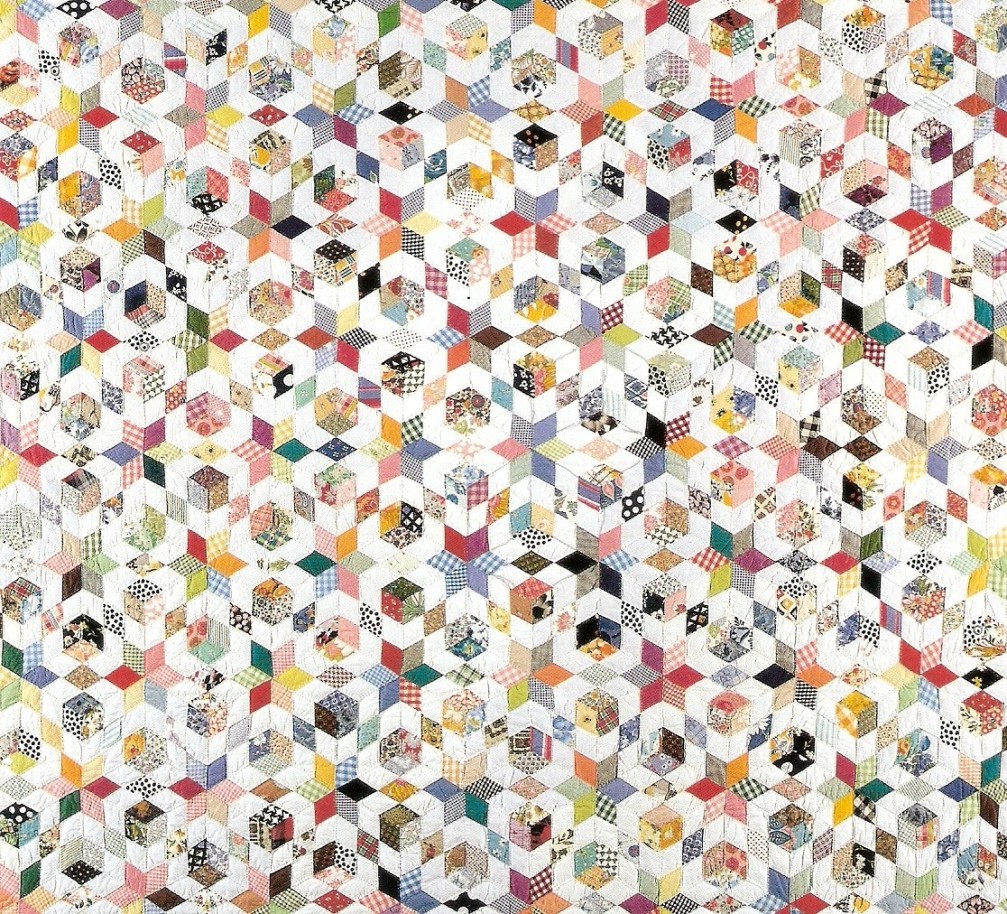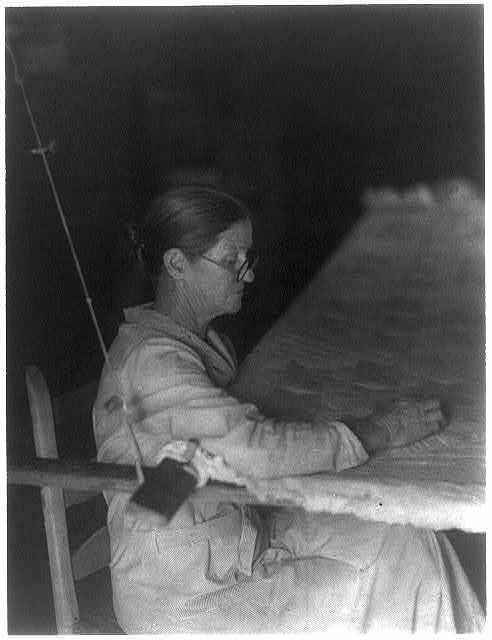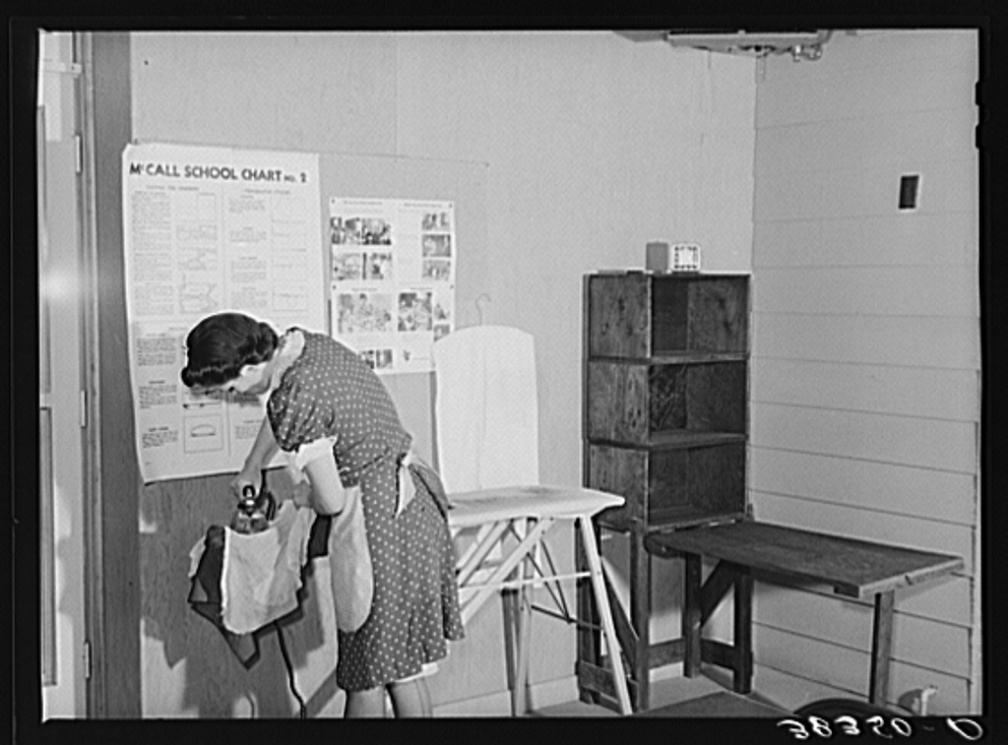
An example of a patchwork design that might date from the 1930’s. Colorful fabric scraps were recycled by sewing and quilting groups. Many of these sewing groups were organized as part of federally funded New Deal projects. In this quilt, dark and medium tones are contrasted with very light colors to make a unique design. This patchwork design appears to be based on the well known nine patch. In the 1930’s each diamond shaped piece may have been individually cut, but I think this pattern could easily be sewn in the modern strip method; the cut being made at a 60 degree angle rather than the usual 90 degree cut. Three 9 patch units are then set together to form one hexagon. You would need three of those hexagons sewn together in a baby blocks pattern (one on top and two on the bottom). Then add three of the single units (used for the construction of each hexagon) to fill in around the edges. You will have a large hexagon shape composed of twelve diamond 9 patch units. Then you will be able to see the center star with the six small cubes floating around it. Here is a tracing I made of a section of the quilt. The center of each of the two large hexagons is centered on a 6 point star in the design and another star is formed by the sides joining. Each diamond figure represents a diamond 9 patch. Of course there are other ways to sew the quilt together, but this way looks like it might work. The quilt in the photo measure 86″ wide and 95″ in length. It looks like at least four of the large hexagons below would be needed for the width. The size of each individual tiny diamond needs to be determined in order to construct a quilt of the desired size. I guess that’s where the puzzle part comes in.


Woman quilting, c. 1930, Appalachia, photographed by Doris Ulmann. One hand on top to send the needle down, one hand underneath to guide the needle up and into position for the next downward stitch. The rope on the side of the quilt frame suggests it may be the type of frame that could be suspended from hooks set into the ceiling. In which case ropes and pulleys are used to pull the frame up and out of the way and the ropes are anchored to cleats in the walls.
https://www.loc.gov/item/2005675832/
https://en.wikipedia.org/wiki/Doris_Ulmann

Wife of farmer living at the Yuba City FSA (Farm Security Administration) farm workers’ camp. Yuba City, California. She is sewing and pressing in the community building Contributor, Lee Russell, 1903-1986. Published 1940 Dec.
Home made furniture for the sewing room. A wooden ironing board and a storage unit, possibly for fabric and sewing supplies, which has a built in table. The fold-out table doubles as a door for the storage unit.
https://www.loc.gov/item/fsa2000019722/PP/
The photograph of the quilt is from Nebraska Quilts and Quiltmakers, University of Nebraska Press, 1991. I purchased a used copy recently for a penny plus shipping. The quilt was made by Helen Ursula Busek Stuchlik (1910-1980). She would have been 20 years old at the beginning of the Depression. The quilt in the photo was made by herself in 1979. You can see the complete quilt with its border and read her story at the link below, pages 176 and 177.
I like the quilt pattern. I might start this one when the tumbling blocks are finished. Mine will be English paper pieced.
LikeLike
I counted about 28 diamonds stretched across the width of the quilt. The quilt top measures 86″ divided by 28 equals about 3″ for the diagonal length of each piece. The larger hexagon units that include a central star and six floating cubes would measure 18″ across (if my calculations are correct!). I might try a pillow.
LikeLike